Eponymous hairstyle
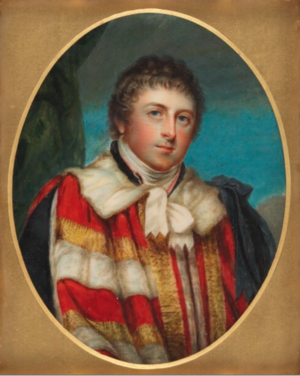
An eponymous hairstyle is a particular hairstyle that has become fashionable during a certain period of time through its association with a prominent individual.
Women
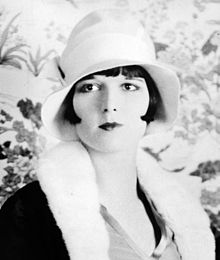
1920–1950
In the early 20th century, the "Louise Brooks bob" (Paramount studios' description c. 1927 of the defining "bob cut" of the "flapper" era) was iconic to the extent of being reproduced by Cyd Charisse in the film Singin' in the Rain (1952), by Melanie Griffith in Something Wild (1986), and by Rose McGowan in The Doom Generation (1995). Although photographs show that Brooks had in fact worn what became known as a bob from childhood, the actress Colleen Moore c. 1923 was probably the first to be widely associated with it. However, there was never such a thing as a "Colleen" and it was Brooks, with her unmistakable sense of "It", that turned the "Louise" into an eponymous classic.[1] Eighty years later, the term was still part of fashion's lexicon: "With her trademark Louise Brooks bob ... Jean Muir built a career as one of Britain's greatest designers."[2]
1950s–1960s
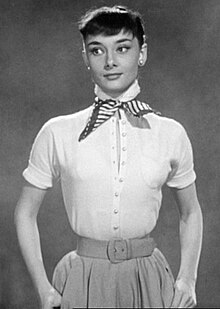
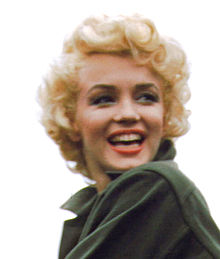
The "
Marilyn Monroe's signature platinum blonde look, worn throughout the height of her career, was called The Marilyn.[5] In the 1960s, the pixie cut worn by the British model Lesley Lawson was called The Twiggy after her nickname.[6]
Other short "gamine" cuts to have attracted imitators included
1970s–1990s

A famous example of this phenomenon was Farrah Fawcett's hairstyle,[8] as seen in the American television series Charlie's Angels in the 1970s. Another around that time was the short "Purdey" cut adopted by British actress Joanna Lumley for her role of that name in the television series The New Avengers, and the short Dorothy Hamill Wedge hairstyle.
Other period examples such as "
"Wannabe" effect
Imitation of such styles can sometimes be attributed to what became known in the 1980s as the "wannabe" effect, a term used particularly with reference to young women who wished to emulate (i.e. "wanna be" like) the American singer Madonna. A 2010 study of British women found that half took a copy of a celebrity's photograph to their salons to obtain a similar hairstyle.[9]
The quest for a particular eponymous style was caricatured in Plum Sykes' novel Bergdorf Blondes (2004), in which it was rumored that glamorous New York heiress Julie Bergdorf had her blonde hair touched up every 13 days ("$450 a highlight") by a stylist at her family's store, Bergdorf Goodman. Thus, other "Thirteen Day Blondes" who attained Julie's precise colour—likened to that of the "very white" hair of Carolyn Bessette-Kennedy—became known as "Bergdorf Blondes".
2000 to present
Recent examples of eponymous hairstyles include the Pob (Posh + Bob) named after
In 2006, The Times noted the transformation over several years in the hairstyle of Yulia Tymoshenko, a former Prime Minister of Ukraine. Illustrated instructions for replicating Tymoshenko's distinctive blonde braided crown were headed "How to do the Yuliya".[10]
In 2009, the most requested hairstyle for women was the "Textured and Tousled, or Curled and Swirled" long, blonde "
Men


Before 1800
In Europe, the
The 9th-century Islamic trend-setter Ziryab is said to have popularized a shorter male hairstyle in Cordoba, with bangs down to the eyebrows and straight across the forehead, and leaving the neck and ears uncovered.[11]
Before and during the
In the transition from wigs to natural hair, the cut "
Regency era
An early example of an eponymous hairstyle was associated with the
Although natural, the Bedford crop was usually styled with wax to form a side parting.Victorian and Edwardian periods
During the mid 19th century,
20th century
The
Since 1945, the toothbrush moustache has been nicknamed the Chaplin and The Hitler.[19]
During the 1950s, pompadour hairstyles were popularized by rock and roll singer Elvis Presley, mostly among the youth and the greaser subculture.
The
In the early 1970s the singer David Bowie popularized the so-called "Ziggy cut", an orange-red form of "mullet" associated with the rather androgynous image that he promoted through his albums The Rise and Fall of Ziggy Stardust and the Spiders from Mars (1972) and Aladdin Sane (1973). To the extent that Bowie during this period appeared to assume the persona of "Ziggy Stardust", the Ziggy cut can be regarded, at least partially, as an eponymous style.
The
Modern era
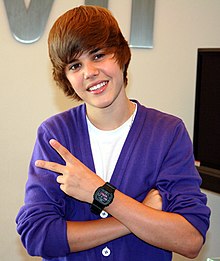
In the late 1990s, with the success of "ER", George Clooney popularized the Caesar-style haircut worn by his character, Dr. Doug Ross. The style worked equally well for both young and older men alike, and Clooney's distinguished salt and pepper color became very popular.
In more recent times the hair of footballers
A more specific eponymous example was the so-called "Sawyer" of
See also
Notes
- ^ See Barry Parris (1991) Louise Brooks
- ^ Sunday Times, 4 June 2006
- ^ See Ian Woodward (1984) Audrey Hepburn
- ^ Sandbrook (2005) Never Had It So Good
- Glamour Magazine. Archived from the originalon 2 April 2015. Retrieved 20 March 2015.
- Glamour Magazine. Archived from the originalon 2 April 2015. Retrieved 20 March 2015.
- ^ See, for example, She, July 2005
- ^ a b c Nir, Sarah Maslin (2009-11-10). "A 'Gossip Girl' Look, Pronto!". The New York Times. Retrieved 2010-07-06.
- ^ Roche, Elisa (2010-05-26). "JENNIFER ANISTON'S A CUT ABOVE FOR 11 MILLION WOMEN". Daily Express. Retrieved 2011-01-19.
- ^ Times, 20 May 2006
- ISBN 90-04-09599-3
- ISBN 0874130999, 9780874130997, google books
- ^ An End of Hair Powder, London Chronicle, Sept. 26, 1795, Reprinted in the New York Times
- ^ John Barrell, The spirit of despotism
- ^ Hardinge, George (1818). Miscellaneous Works, in Prose and Verse, of George Hardinge. J. Nichols, Son, and Bentley. pp. Vol. 2, p. 396.
bedford crop.
- ^ The long and the short
- ^ Garibaldi beard
- ^ Beard styles
- ^ Jumpman's toothbrush moustache
- ^ See Susie Dent (2003) The Language Report
- ISBN 9781620653517.
External links
- The Ziggy Stardust haircut
- "History: 25 Hairstyles of the Last 100 Years" – 5: The Rachel, 1990s. Retrieved 2011, August 23 at Listverse.com.
